Hello,
I am new to this forum and am hoping to get the opinion of folks who are more knowledgeable in pool installation and safety than we are.
We assembled an Intex 32x16x52 pool this week. We did a lot of research before beginning, as we wanted to make sure we were doing things properly, safely, and avoiding some of the most common pitfalls with above ground pools of this size.
We cleared and leveled the ground, removing all rocks and debris. (You will see rocks around where the pavers are set in, but rest assured there are no rocks under the footprint of the pool. We were very thorough in the rock removal under the pool) Then we has 4.5 tons of sand delivered and spread and tampered the sand, again checking to make sure it was level.
Then we set in 20x20x2 inch pavers, leveling them with the ground. We rented a laser level to make sure all the pavers were level with one another within 1/2 inch. Then we put the pool cloth on top of the sand and began building the pool.
Once we had it built and were confident that it was level, we began filling it. Everything was going well until it reached about 90-95% full and then pavers started cracking. 6 of 8 cracked on one side and 3 of 4 cracked on one end. So 9 of 24 are cracked.
Even after the pavers cracking, the pool is level within 1 inch. We measured from the top of the rail to the water line, measuring every 3 feet. All the way around the pool, there is less than a one inch variance in the level. There is about a 2 foot length of area on one side that is almost 1 1/2 inch off from the lowest point, but we suspect that the sand might be slight higher there.
Now that I have provided all the info about the install and what happened after, my question is this... Given that it is within an inch of level, Is this safe to use and address next year? We are in the Seattle area and we only have about 6 to 8 weeks left that we will be able to enjoy it before the weather turns. At that point, we would take it down for the season.
I have included pictures of the pool, the water level, the support legs etc.
I would love any/all feedback and insight you might be willing to offer. Thanks in advance.
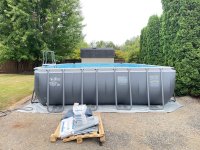
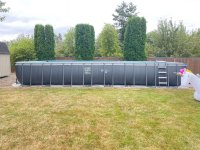
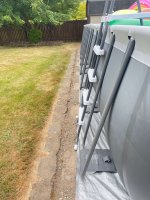
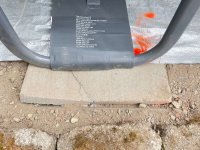
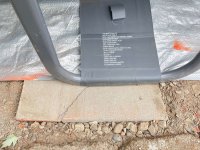
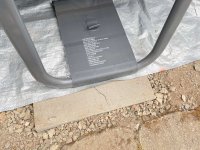
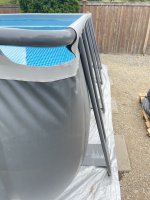
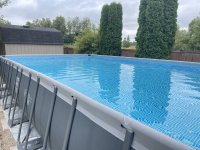
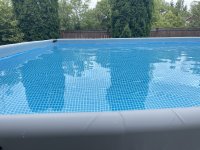
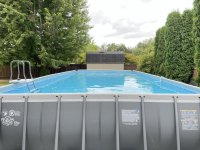
I am new to this forum and am hoping to get the opinion of folks who are more knowledgeable in pool installation and safety than we are.
We assembled an Intex 32x16x52 pool this week. We did a lot of research before beginning, as we wanted to make sure we were doing things properly, safely, and avoiding some of the most common pitfalls with above ground pools of this size.
We cleared and leveled the ground, removing all rocks and debris. (You will see rocks around where the pavers are set in, but rest assured there are no rocks under the footprint of the pool. We were very thorough in the rock removal under the pool) Then we has 4.5 tons of sand delivered and spread and tampered the sand, again checking to make sure it was level.
Then we set in 20x20x2 inch pavers, leveling them with the ground. We rented a laser level to make sure all the pavers were level with one another within 1/2 inch. Then we put the pool cloth on top of the sand and began building the pool.
Once we had it built and were confident that it was level, we began filling it. Everything was going well until it reached about 90-95% full and then pavers started cracking. 6 of 8 cracked on one side and 3 of 4 cracked on one end. So 9 of 24 are cracked.
Even after the pavers cracking, the pool is level within 1 inch. We measured from the top of the rail to the water line, measuring every 3 feet. All the way around the pool, there is less than a one inch variance in the level. There is about a 2 foot length of area on one side that is almost 1 1/2 inch off from the lowest point, but we suspect that the sand might be slight higher there.
Now that I have provided all the info about the install and what happened after, my question is this... Given that it is within an inch of level, Is this safe to use and address next year? We are in the Seattle area and we only have about 6 to 8 weeks left that we will be able to enjoy it before the weather turns. At that point, we would take it down for the season.
I have included pictures of the pool, the water level, the support legs etc.
I would love any/all feedback and insight you might be willing to offer. Thanks in advance.













